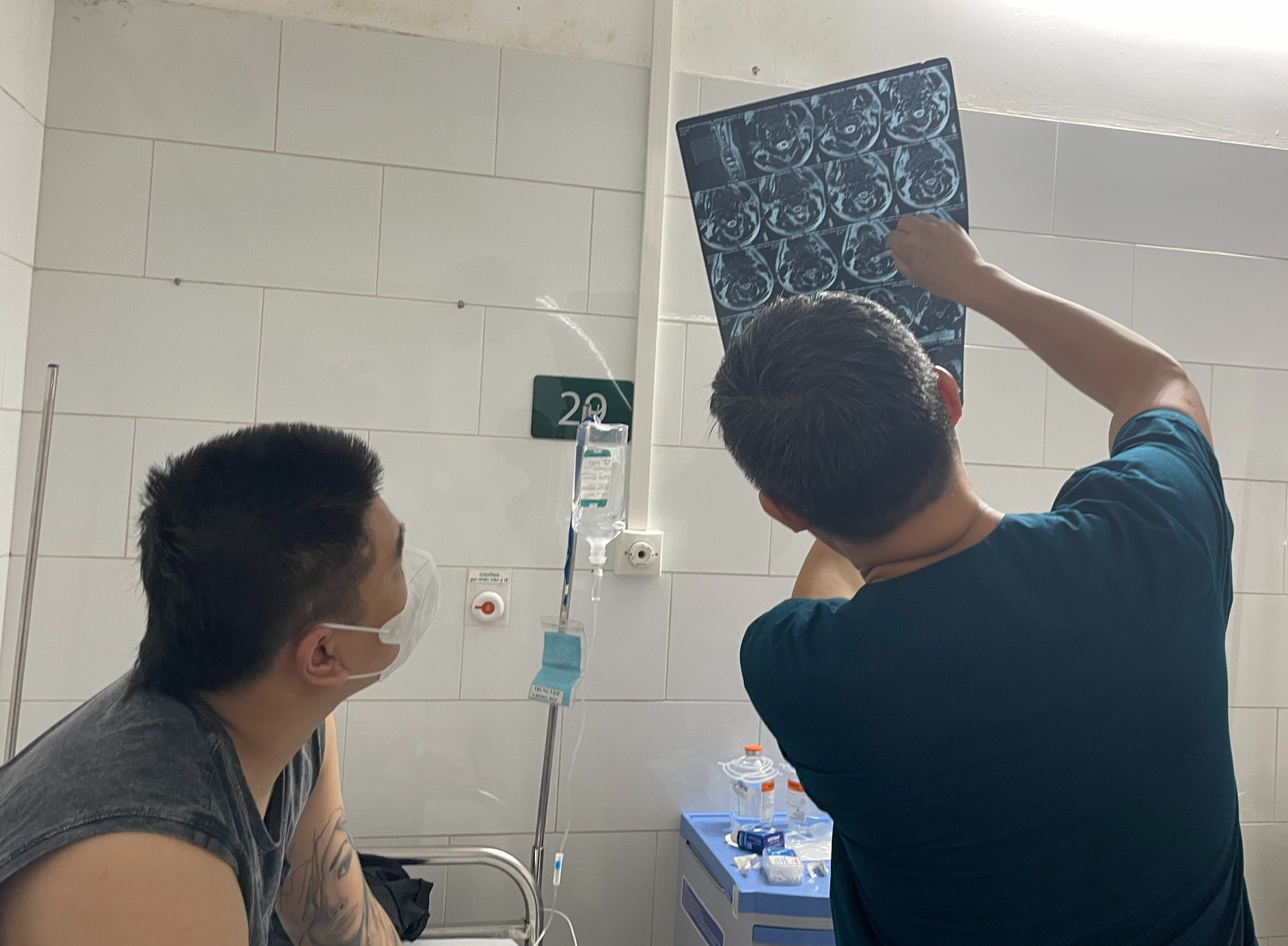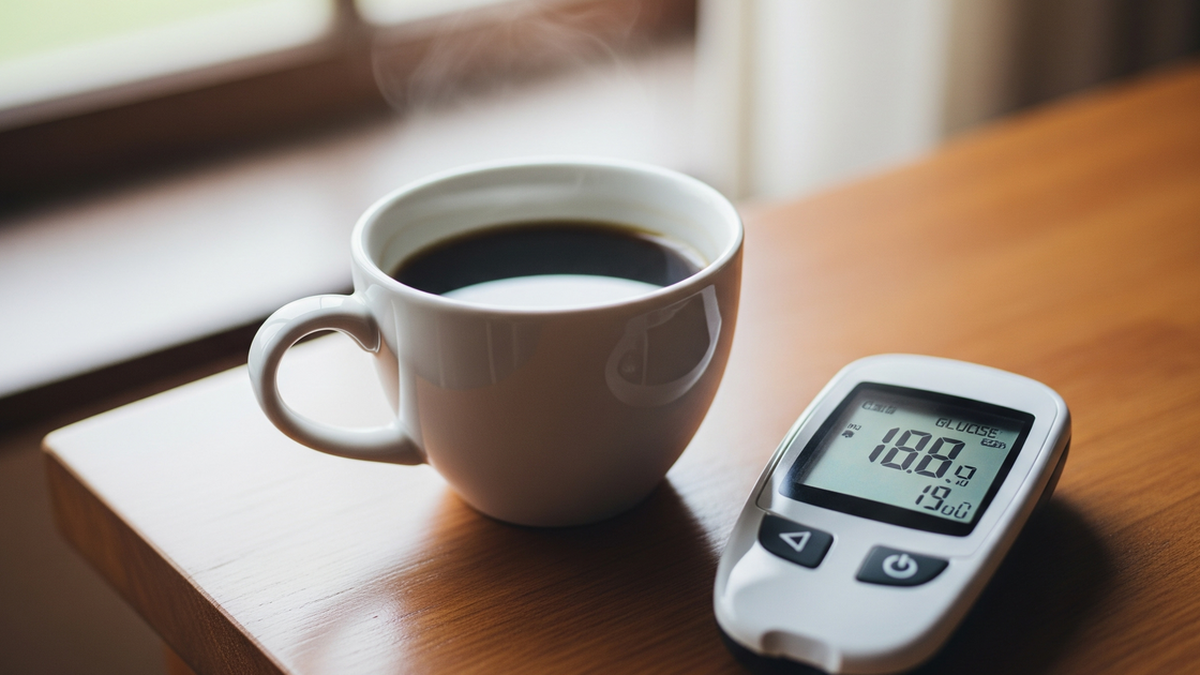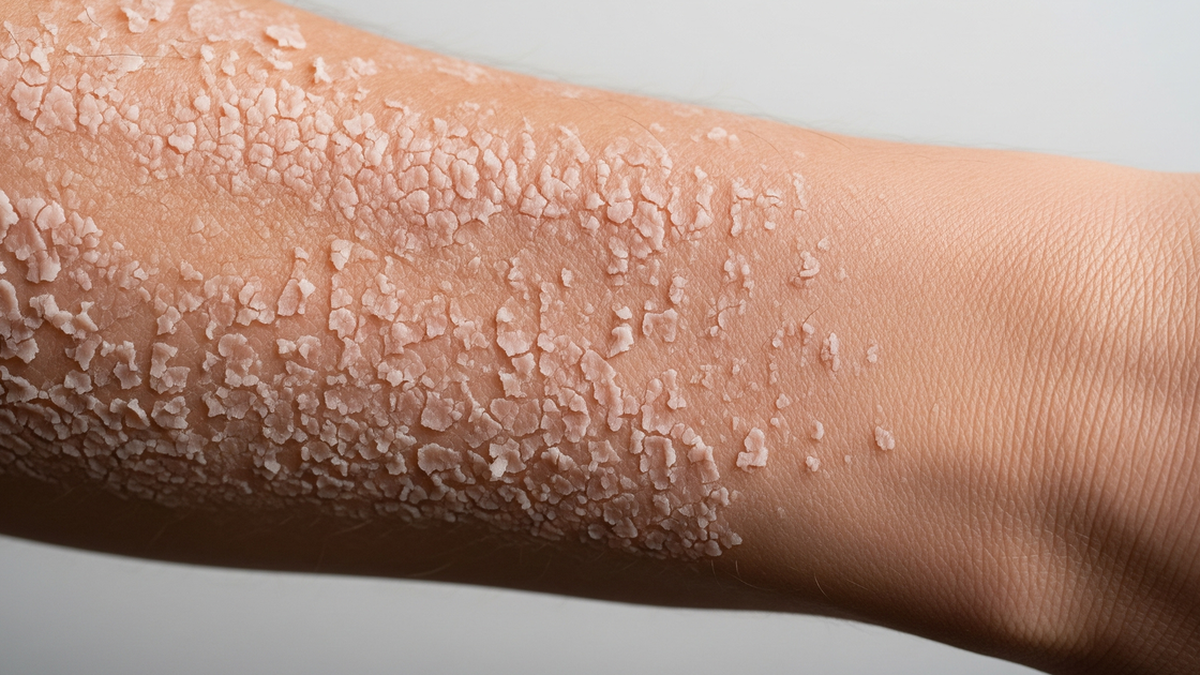Bach Mai Hospital ( Hanoi ) has just received and treated a 25-year-old male patient (in Hai Phong) who was poisoned by N2O gas after a long period of inhaling laughing gas .
The male patient said that he used to supply N2O (laughing gas) to many establishments in need, including bars, restaurants, etc. The patient himself had been inhaling laughing gas for about 3-4 years. While inhaling laughing gas, this young man sometimes felt numbness in his hands and feet, but he continued to use it.

MRI scan shows patient has cervical spinal cord injury after laughing gas abuse
About 2 months before being hospitalized, the patient used a large amount of laughing gas, sometimes inhaling 5-10 N2O gas cylinders/day, equivalent to 100-200 laughing gas balloons. In the past three weeks, he felt more numbness, so he called someone to give him IV fluids at home for nearly 10 days, but the numbness did not improve. After that, seeing that the young man's body was getting weaker and he could not walk steadily, his family took him to the hospital.
According to Dr. Nguyen Trung Nguyen, Director of the Poison Control Center (Bach Mai Hospital), the patient was admitted to the hospital with muscle weakness, numbness almost all over the body, difficulty walking, especially the X-ray results showed that the patient had damage to the cervical spinal cord. "This is the area that transmits nerves from the brain to the whole body, so when damaged, it will be very dangerous for health" - Dr. Nguyen said.
After 4 days of treatment, the patient was more stable but still had muscle weakness and needed to continue monitoring for brain and cervical spinal cord damage.
Dr. Nguyen said that laughing gas is essentially a balloon filled with N2O gas. This gas is used in medicine as an anesthetic, it has pain-relieving and sedative effects. When inhaling N2O, people will experience stimulation, excitement, and hallucinations that cause laughter. Therefore, people abuse it for entertainment purposes.
However, in reality, prolonged use of NO2, or uncontrolled recreational abuse, can cause serious problems with the nervous system, cardiovascular system, blood pressure, brain inhibition, and even death due to acute poisoning.

Laughing gas is used quite commonly for entertainment purposes.
"N2O also damages the brain and nerves, causing patients to have sensory disturbances, numbness, and paralysis of all muscles. That is the reason why many patients are admitted to the hospital with limited or no mobility, affecting their vital functions. Diagnostic scan results for these patients show that the spinal cord is severely damaged. When performing a cross-sectional scan, the damage can be up to 1/3 of the spinal cord, which is very severe," Dr. Nguyen warned.
In addition, N2O also affects the mind, causing mental disorders due to brain damage. With blood, this gas also causes anemia due to bone marrow suppression, leading to bone marrow failure. With the reproductive organs, N2O reduces male and female fertility.
In some countries, N2O is considered a psychoactive substance that must be controlled and included in the list of substances in the same group as narcotics, not allowed for free recreational use.
Recently, the Ministry of Health has sent a document to the health departments of provinces and cities to strengthen the management of production, trading and use of N2O gas products, and strictly handle acts of abuse and misuse such as laughing gas.
Source


























![[Photo] National Assembly Chairman attends the seminar "Building and operating an international financial center and recommendations for Vietnam"](https://vphoto.vietnam.vn/thumb/1200x675/vietnam/resource/IMAGE/2025/7/28/76393436936e457db31ec84433289f72)










































































Comment (0)